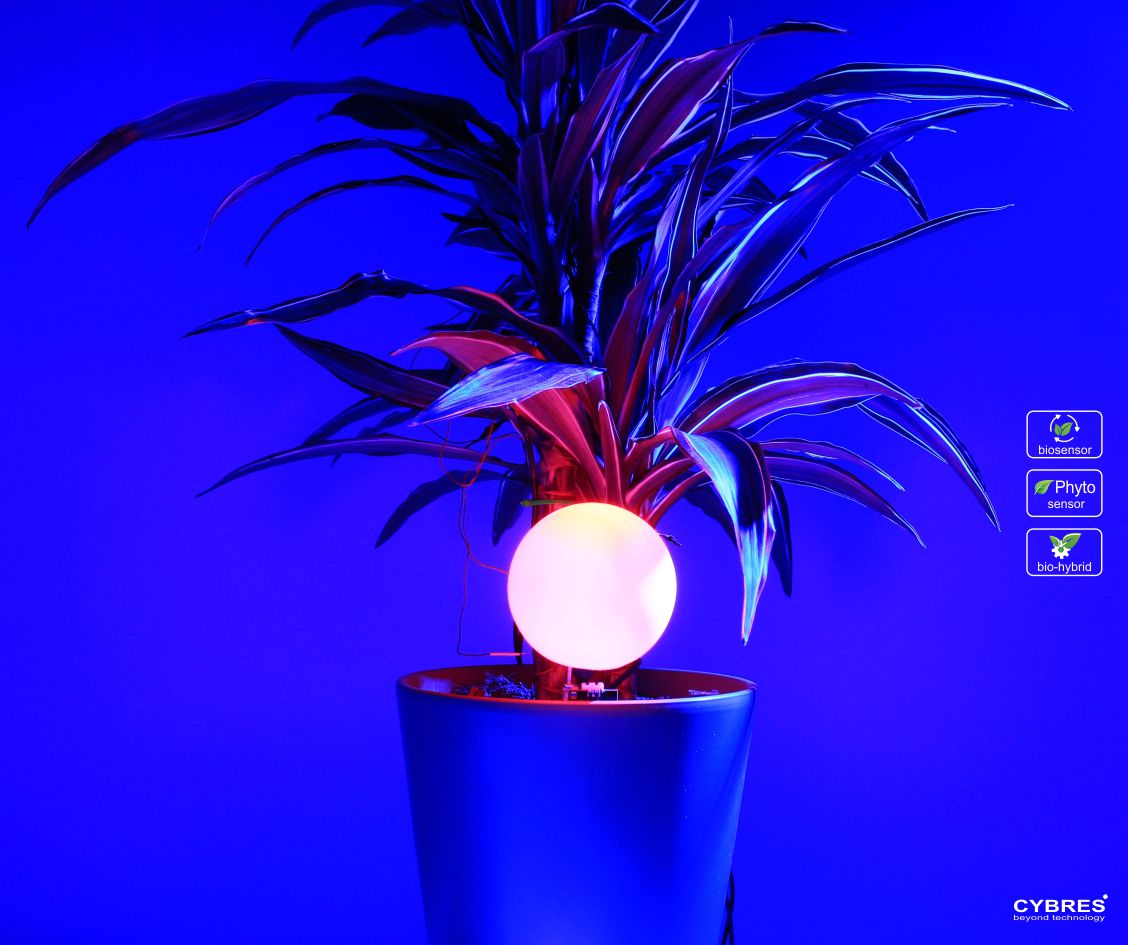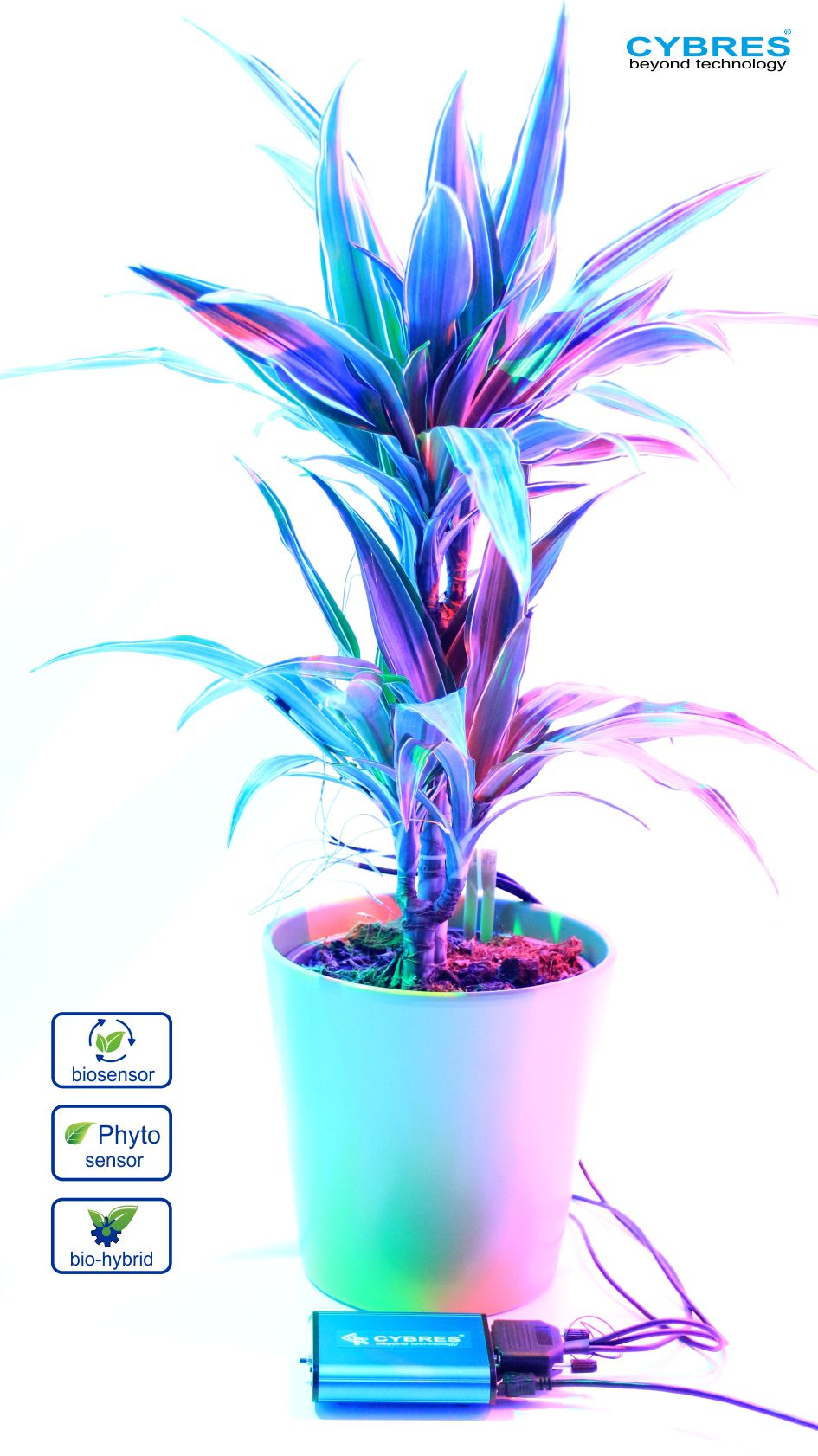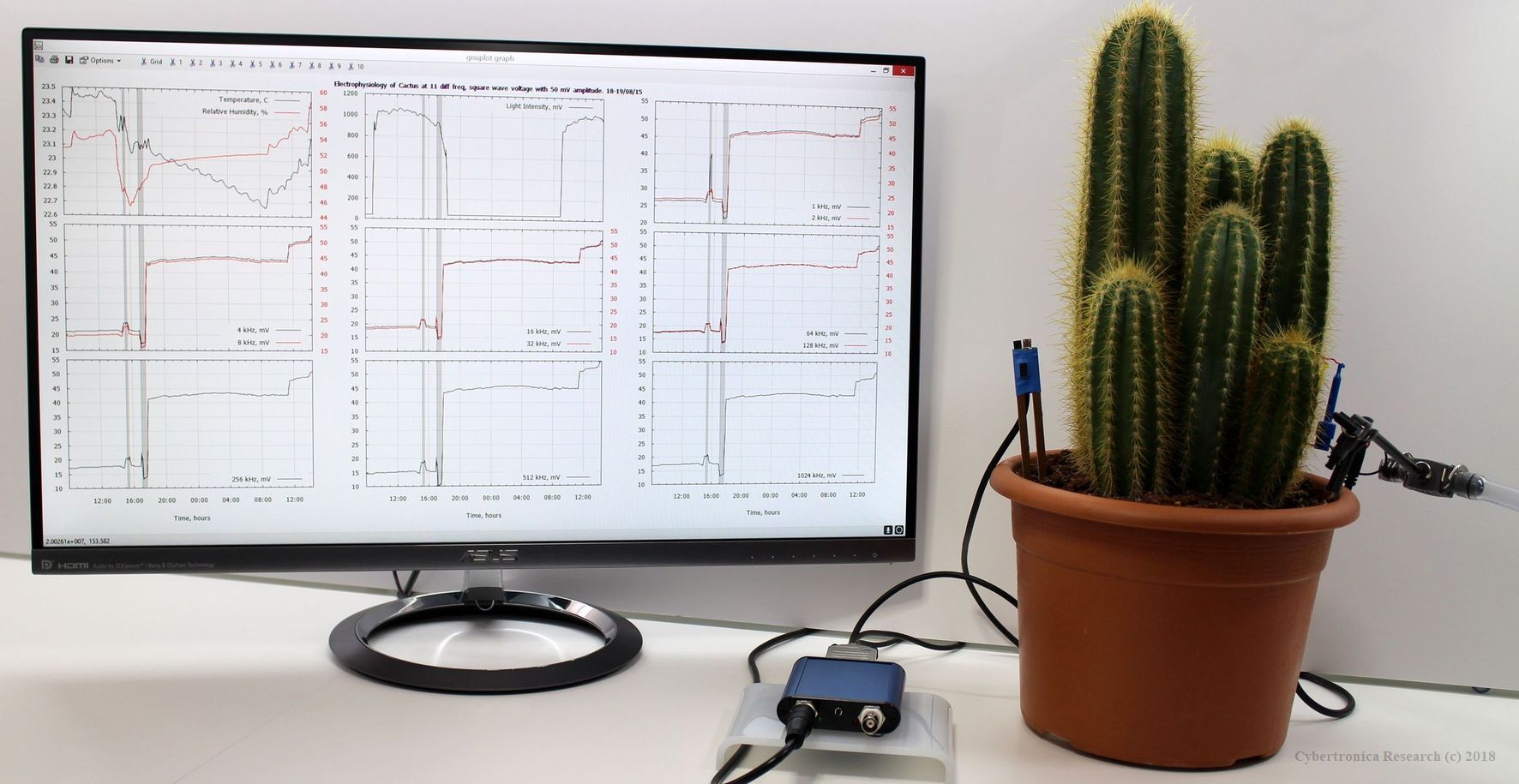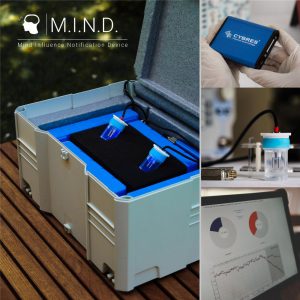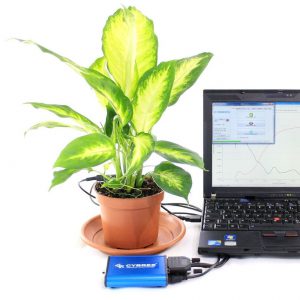The system measures physiological and electrophysiological parameters of phyto-objects (productive and home plants, herbs, shrubs, trees). In addition to phytosensing, the device can perform phytoactuation, i.e. control light, irrigation or fertilization based on biofeedback from plants. The measured parameters (depending on used electrodes):
- Biopotentials (2 channels, Ag99 needles), used for:
- measuring fast electrical response to different stimuli
- tracking periodical activities of the plant
- interations with plants based on e.g. mechanical or thermal stimuli
- other bio-electric approaches
- Tissue impedance sensors (2 channels, Ag99 needles), used for:
- measuring conductivity of organic tissues at different frequencies
- frequency shift in tissue response
- electrochemical sap flow measurements
- electrical stimulation
- other ionic interfaces to organic/living materials/objects
- Leaf transpiration (single channel)
- Soil moisture and temperature
- Environmental parameters: 3D accelerometer/magnetometer, EM power meter (450kHz-2.5GHz), air temperature and humidity, pressure, light
- Supported external sensors: CO2, O2, ion-selective electrodes, any sensors with I2C interface
Functions with two channels enable performing high-resolution differential measurement. Real-time data (with time stamps) can be recorded into the internal flash memory, transmitted via USB or (with optional mini PC in pro-version) are accesible via WiFi/Ethernet/Bluetooth on any mobile device/PC. Data can be written as html-pages for the online data plot in internet. The needle- or surface- electrodes are used to receive signals from plants. The system is fully autonomous and can operate without user intervention.
In addition to phytosensing, the device can also perform phytoactuation, i.e. to execute real-time data processing and decision making for operating different actuators. This functionality is useful for electrical or light stimulation of plants (blue/red light stimulation), optimizing watering and lighting mode, conducting fully autonomous experiments and development of complex feedback-based and adaptive scenarios with bio-hybrid systems. It possesses built-in semiconductor relays (switches) e.g. for RGB LEDs or water pumps, and can actuate any external USB relays. The system implements dynamical mapping between embedded signal detectors, numerical processors and actuators with reactive, probabilistic and homeostatic decision mechanisms. The phytosensor is a part of CYBRES bio-hybrid interface devices.
Anwendungen
This system is designed for professional and amateur purposes, as a tool for biological laboratories, and for plant enthusiasts. In the professional use this system can be employed to study the electrical reaction of plants, as phyto- or bio-sensors, in the bio-hybrid and robotic systems, for systems of mixed reality, smart home applications, for biotechnological processes based on phyto-objects. Additional algorithms for data analysis and actuation can be easily implemented with the provided script language. In amateur applications the system has a variety of potential usages, for example, in school or university courses on biology, for studying ‘the electrical language of plants’, or to carry out experiments in the context of Cleve Backster and Peter Tompkins works with the ‘Secret life of plants’.
Pro-version
In the extended configuration, the system is configured as an indicator of biological pathogenicity of the environment. It can measure separate parameters (e.g. CO2 or EM emission level) or a ‘complex biological pathogenicity’ – a combination of different parameters that affect the metabolism (e.g. geobiological situation and cosmobiological factors). The system needs about one-two weeks to adapt to the plant, its signals and to calculate the correlations with other sensors. For instance, the green LED indicates a normal signal level of the plant, yellow – the deviation of current parameters from a ‘normal’, red – the critical state. The main purpose of this system is to attract attention to possible biological pathogenicity on early stage. In this configuration the phytosensor is capable to operate without a connected PC/laptop.
The delivering set includes:
- The MU3.4 module with integrated sensors (3D accelerometer/magnetometer, EM power meter (450kHz-2.5GHz), air pressure) and USB 2.0 connectivity;
- Bio-potential/tissue-conductivity electrodes (Ag99);
- The leaf transpiration sensor;
- The senor panel with several environmental sensors (air temperature, air humidity, light);
- The soil moisture/soil temperature sensor;
- The light-ball actuator;
- The mini-PC with Intel Atom (2Gb/30Gb, with Win10 OS) for advanced connectivity WiFi/Ethernet/Bluetooth;
- Software;
- Short user manual in different languages;
- Full user manual;
- Plastic case for measurement equipment.
Optional:
- Stainless steel electrodes for trees/shrubs;
- IP65/66 water protected package for outdoor applications;
- USB server for WiFi/Etherner connectivity without PC;
- USB relay for switching 110/220V load (motors, lamp, pumps, etc.).
In all configurations, the device provides access to all obtained data and allows their algorithmic, mathematical and statistical analysis. This mode is useful for optimization of plant’s productive functionality, for using plants as biosensors, including weak signals, integration into systems of mixed reality, smart home applications, measuring human psycho-emotional influences and unconventional instrumental detectors, as well as for scientific research of the world of plants. In particular, it can be used to explore the leanring and adaptation processes in vegetable and bio-hybrid systems based on plants.


